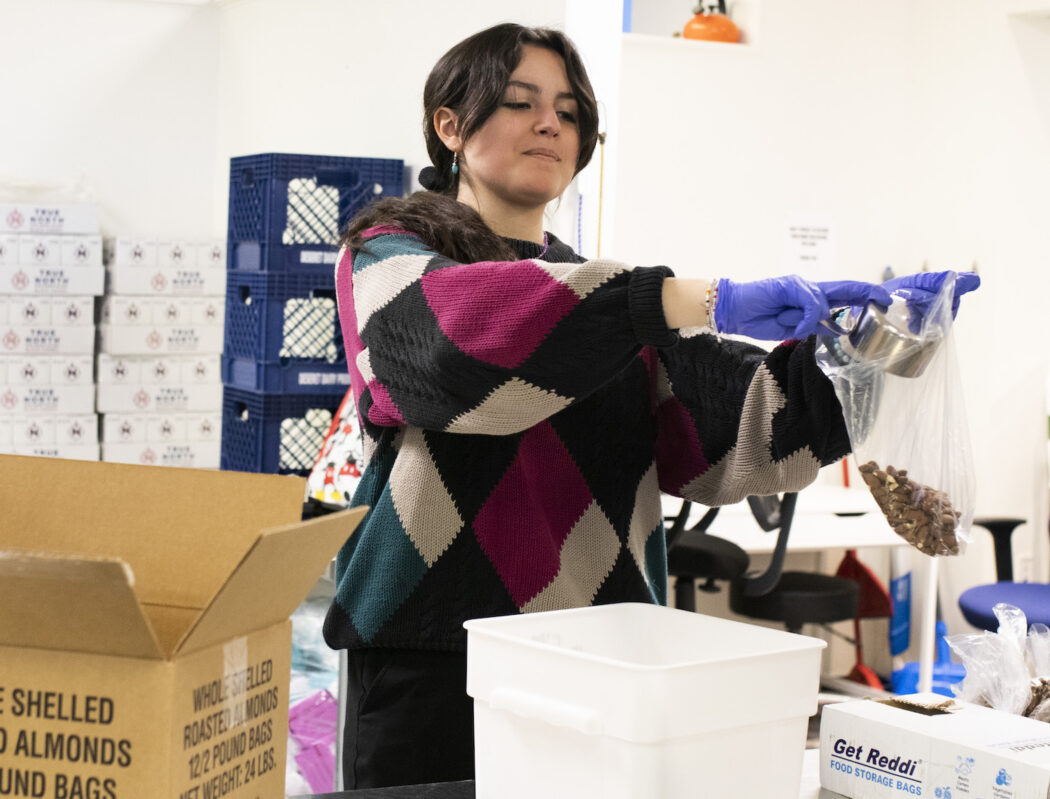New changes coming to the SNAC pantry
By July 1, changes in the oversight of the Student Nutrition Access Center, or SNAC, will officially transfer from Student Affairs and the Center for Community Engagement to the College of Agriculture and Applied Sciences, according to Heidi Wengreen, department head of nutrition dietetics and food sciences.
Newly appointed faculty director for the SNAC pantry Casey Coombs said, “Student Affairs and the Center for Community Engagement began out of a trailer and have worked tirelessly to build SNAC up to what it is today.”
Coombs and the new oversight of SNAC will continue to partner with the Center.
According to Wengreen, the college had already worked with SNAC previously. The department is invested in SNAC and has common goals, so the changes will allow faculty with food expertise to be better connected.
These professors can provide students and food that could help support the mission of SNAC, according to Wengreen.
“It felt like a natural transition and a good home for the SNAC pantry because we have a lot of different resources,” Coombs said, “We are hoping it will increase collaboration between all of our experts in the college and maybe even result in new products being available and distributed to students through SNAC.”
Another goal is to increase the opportunities for students within the NDFS department to become involved with SNAC.
Coombs said, “We have a lot of students who can not only provide a lot of resources for SNAC, but SNAC will also offer an infrastructure for students to have meaningful experiential learning.”
These students will come from within the dietetics programs and the master’s program in public health and nutrition under the NDFS department.
Students interested in other volunteer and service opportunities can contact Coombs for those opportunities, as well asAmeriCorps and work-study positions.
Despite the transitioning period, Wengreen hopes there will be no visual changes to SNAC.
“We really hope that students don’t see any change, actually. SNAC will continue to be offered at the physical space it has been located,” she said. “We anticipate serving students in the same way that students have been served in the past and hopefully expanding that in the future.”
The SNAC pantry provided free food and supplies to more than 1,950 individuals who visited in 2022.
Its mission is to reduce food insecurity, educate students about basic needs, and reduce food waste by recovering food.
More than 38% of Higher Education students in Utah are food insecure.
One of the first things to go for students who are balancing financial needs is either enough food or quality food.
Food insecurity among college students is associated with worse academic performance, increased risk of leaving higher education, poorer self-rated general health, decreased social engagement, and an increase in mental health concerns, according to Coombs.
“Aiding food security is one of the most fundamental services we can provide,” Coombs said.
Both Coombs and Wengreen vocalized the importance of donations for the SNAC pantry. For more information on how to offer support, visit usu.edu/advancement/give/caas/snac.
-Andie.Allen@usu.edu
Featured photo by Bailey Rigby

